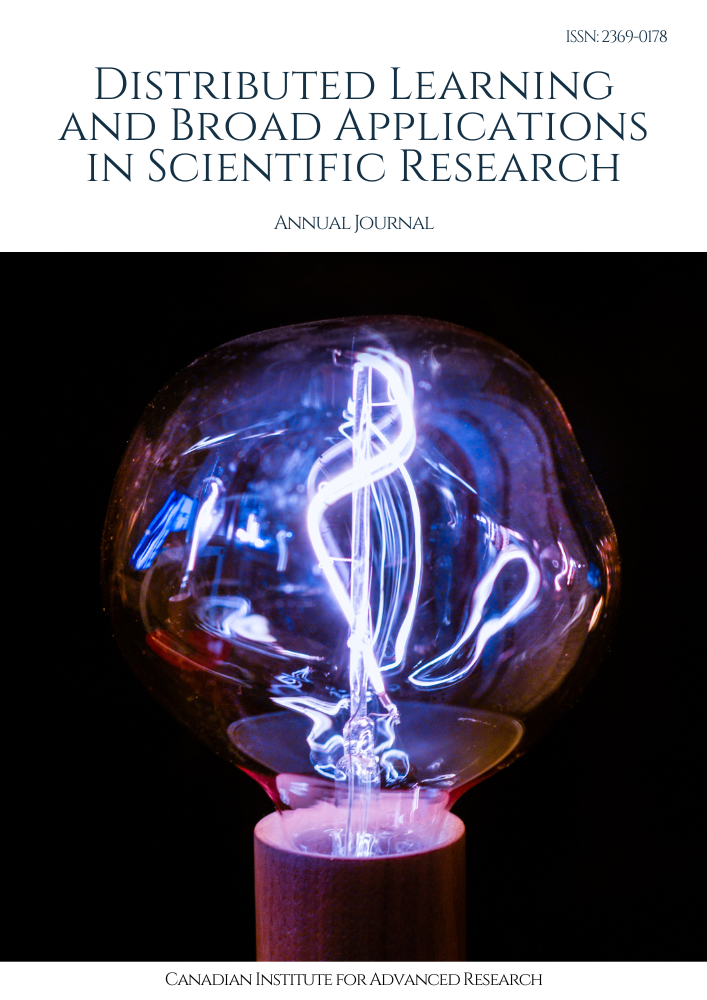AI-Based Enhancements for Vehicle-to-Home Integration
Keywords:
AI-Based Enhancements, Vehicle-to-Home IntegrationAbstract
Vehicles and infrastructure involved in different domains are converging, such as from transportation infrastructures evolving along the lines of the Internet of Things to smart cities, which are expected to benefit from plug-in electric vehicles that provide V2H interfaces enabling smart home systems. This seems very suitable for today's smart marketplace. However, with smart functionalities and distributed resources rarely ever occupying center stage, energy management seems more worth considering than being overlooked. In this context, what is especially brought home is the V2H solution that connects a smart household to not only the transportation system but also an autonomous system in which vehicles can provide energy and other services without human intervention. Then, the logical follow-up seems to be the lofty realms of AI that can transform the idea of V2H and its building blocks, such as VPPs, which are the focus of a great deal of research, into a bold sort of autonomous units. AI can do both on the levels of automating vehicle-to-home integration and improving vehicle performance while providing energy for smart homes.
Downloads
References
Tamanampudi, Venkata Mohit. "Automating CI/CD Pipelines with Machine Learning Algorithms: Optimizing Build and Deployment Processes in DevOps Ecosystems." Distributed Learning and Broad Applications in Scientific Research 5 (2019): 810-849.
Pal, Dheeraj Kumar Dukhiram, et al. "AIOps: Integrating AI and Machine Learning into IT Operations." Australian Journal of Machine Learning Research & Applications 4.1 (2024): 288-311.
Kodete, Chandra Shikhi, et al. "Determining the efficacy of machine learning strategies in quelling cyber security threats: Evidence from selected literatures." Asian Journal of Research in Computer Science 17.8 (2024): 24-33.
Singh, Jaswinder. "Sensor-Based Personal Data Collection in the Digital Age: Exploring Privacy Implications, AI-Driven Analytics, and Security Challenges in IoT and Wearable Devices." Distributed Learning and Broad Applications in Scientific Research 5 (2019): 785-809.
Alluri, Venkat Rama Raju, et al. "Serverless Computing for DevOps: Practical Use Cases and Performance Analysis." Distributed Learning and Broad Applications in Scientific Research 4 (2018): 158-180.
Machireddy, Jeshwanth Reddy. "Revolutionizing Claims Processing in the Healthcare Industry: The Expanding Role of Automation and AI." Hong Kong Journal of AI and Medicine 2.1 (2022): 10-36.
Tamanampudi, Venkata Mohit. "AI-Powered NLP Agents in DevOps: Automating Log Analysis, Event Correlation, and Incident Response in Large-Scale Enterprise Systems." Journal of Artificial Intelligence Research and Applications 4.1 (2024): 646-689.
Singh, Jaswinder. "Social Data Engineering: Leveraging User-Generated Content for Advanced Decision-Making and Predictive Analytics in Business and Public Policy." Distributed Learning and Broad Applications in Scientific Research 6 (2020): 392-418.
S. Kumari, “Real-Time AI-Driven Cybersecurity for Cloud Transformation: Automating Compliance and Threat Mitigation in a Multi-Cloud Ecosystem ”, IoT and Edge Comp. J, vol. 4, no. 1, pp. 49–74, Jun. 2024
Tamanampudi, Venkata Mohit. "Leveraging Machine Learning for Dynamic Resource Allocation in DevOps: A Scalable Approach to Managing Microservices Architectures." Journal of Science & Technology 1.1 (2020): 709-748.
Downloads
Published
Issue
Section
License

This work is licensed under a Creative Commons Attribution-NonCommercial-ShareAlike 4.0 International License.
License Terms
Ownership and Licensing:
Authors of research papers submitted to Distributed Learning and Broad Applications in Scientific Research retain the copyright of their work while granting the journal certain rights. Authors maintain ownership of the copyright and have granted the journal a right of first publication. Simultaneously, authors agree to license their research papers under the Creative Commons Attribution-NonCommercial-ShareAlike 4.0 International (CC BY-NC-SA 4.0) License.
License Permissions:
Under the CC BY-NC-SA 4.0 License, others are permitted to share and adapt the work, as long as proper attribution is given to the authors and acknowledgement is made of the initial publication in the journal. This license allows for the broad dissemination and utilization of research papers.
Additional Distribution Arrangements:
Authors are free to enter into separate contractual arrangements for the non-exclusive distribution of the journal's published version of the work. This may include posting the work to institutional repositories, publishing it in journals or books, or other forms of dissemination. In such cases, authors are requested to acknowledge the initial publication of the work in this journal.
Online Posting:
Authors are encouraged to share their work online, including in institutional repositories, disciplinary repositories, or on their personal websites. This permission applies both prior to and during the submission process to the journal. Online sharing enhances the visibility and accessibility of the research papers.
Responsibility and Liability:
Authors are responsible for ensuring that their research papers do not infringe upon the copyright, privacy, or other rights of any third party. Scientific Research Canada disclaims any liability or responsibility for any copyright infringement or violation of third-party rights in the research papers.
If you have any questions or concerns regarding these license terms, please contact us at editor@dlabi.org.



